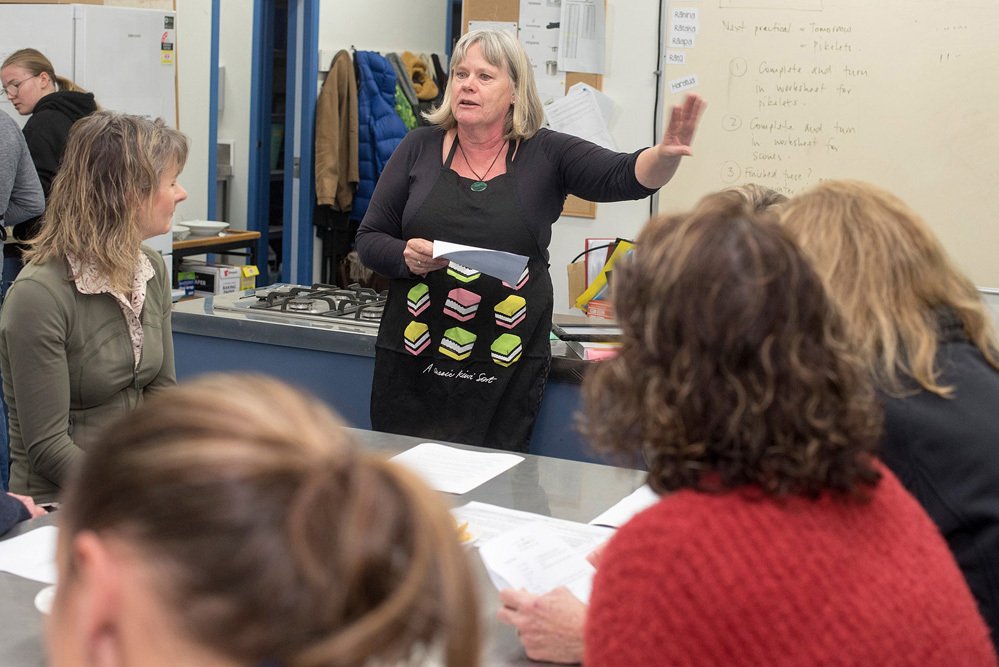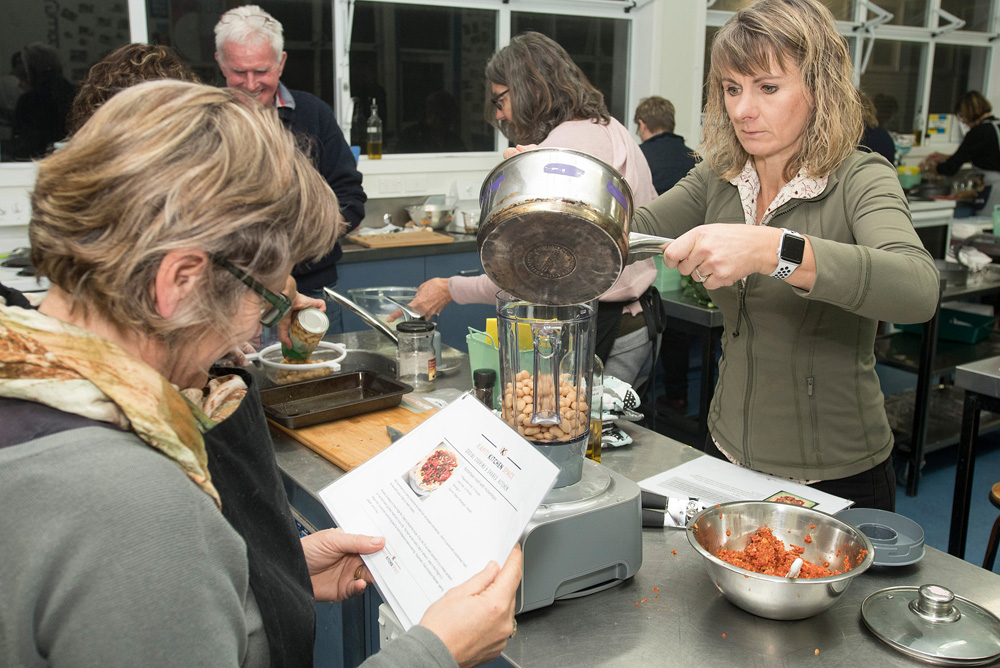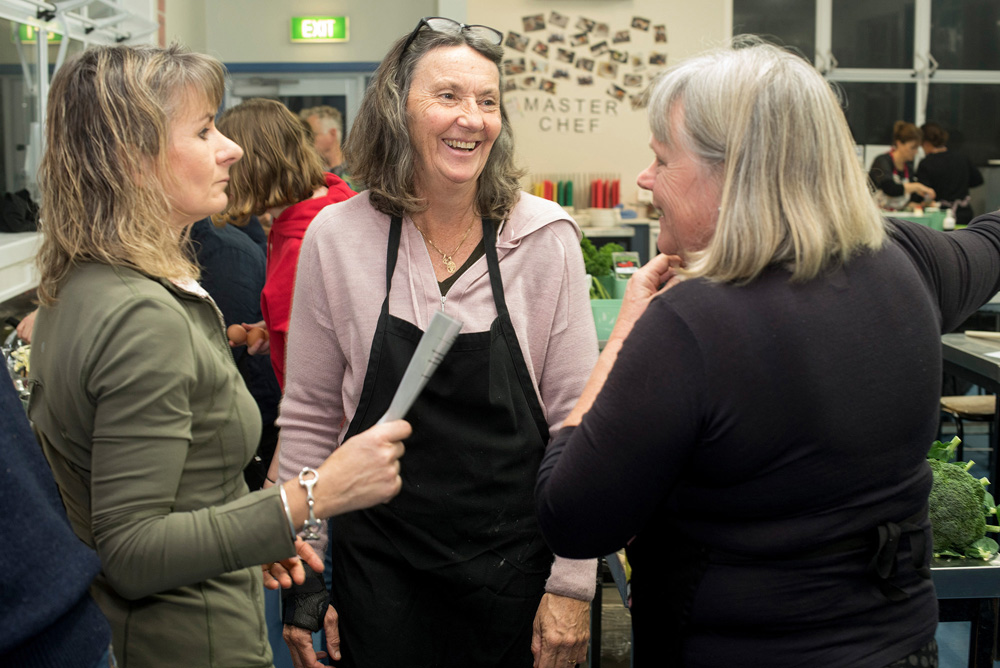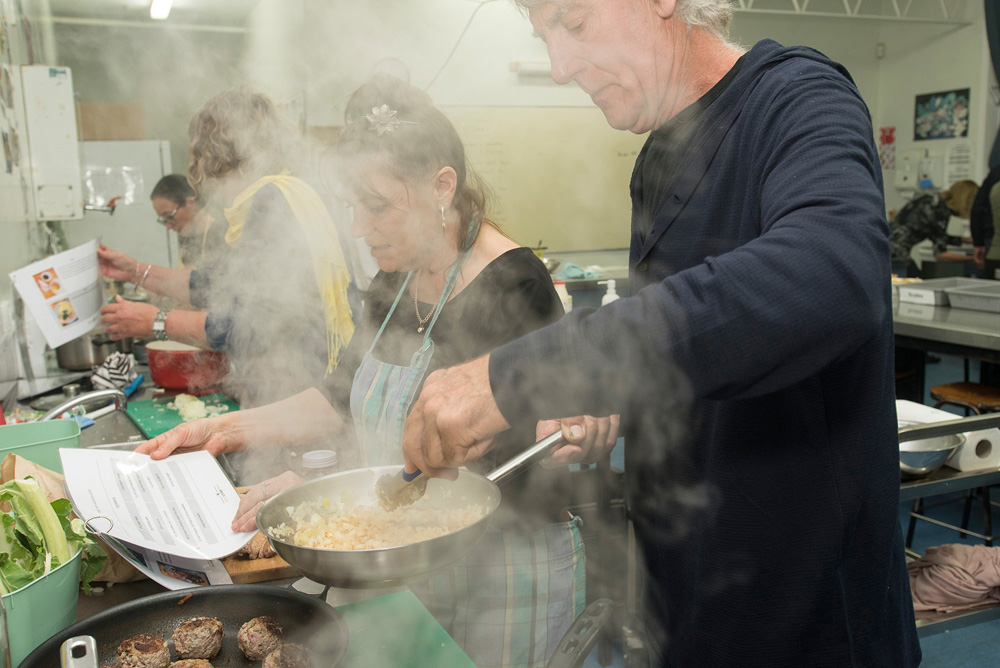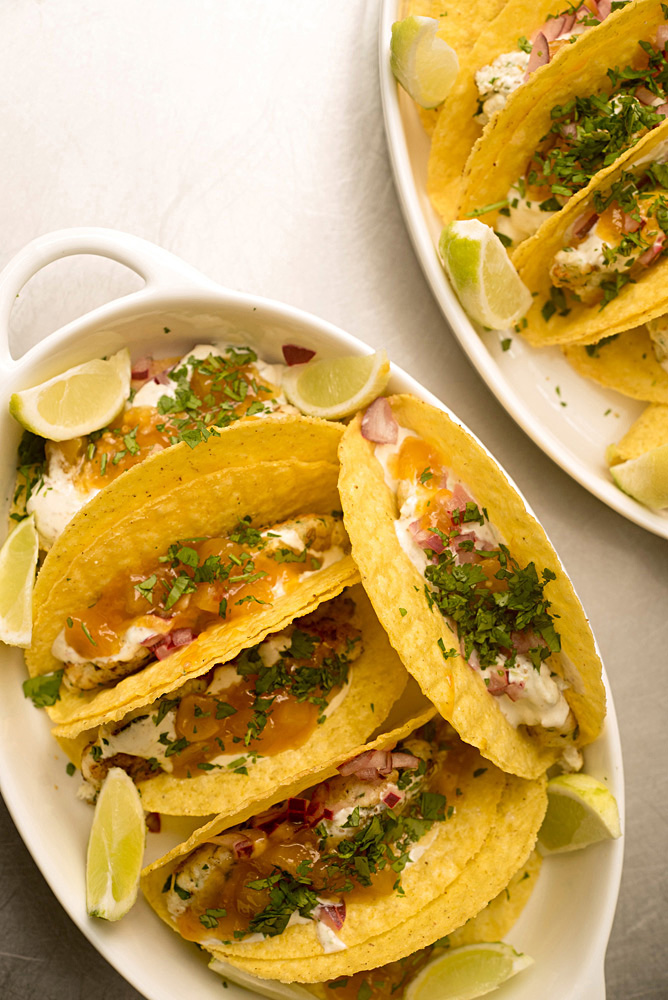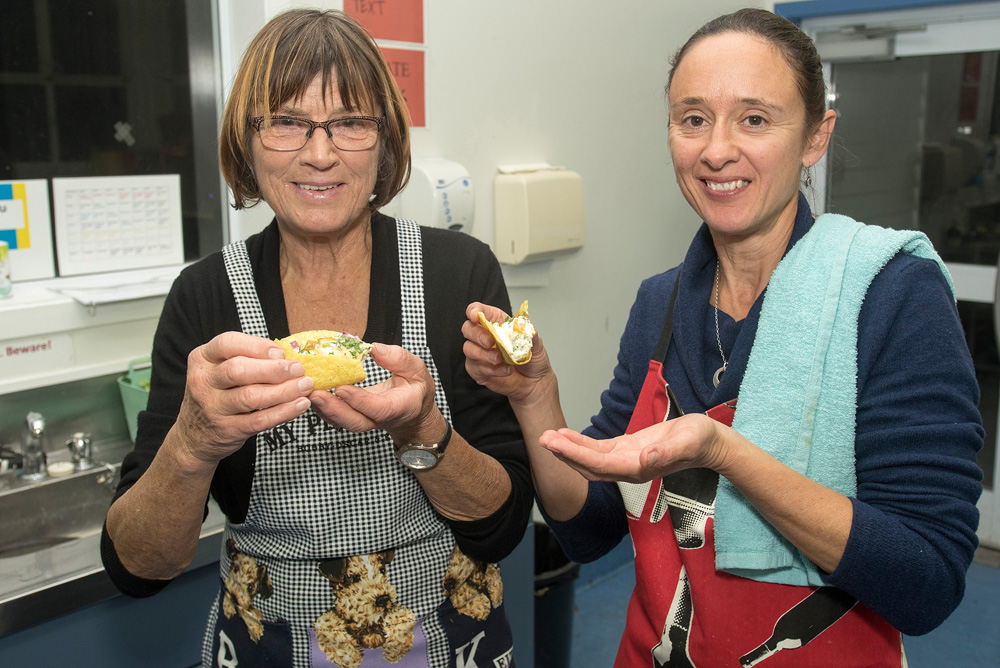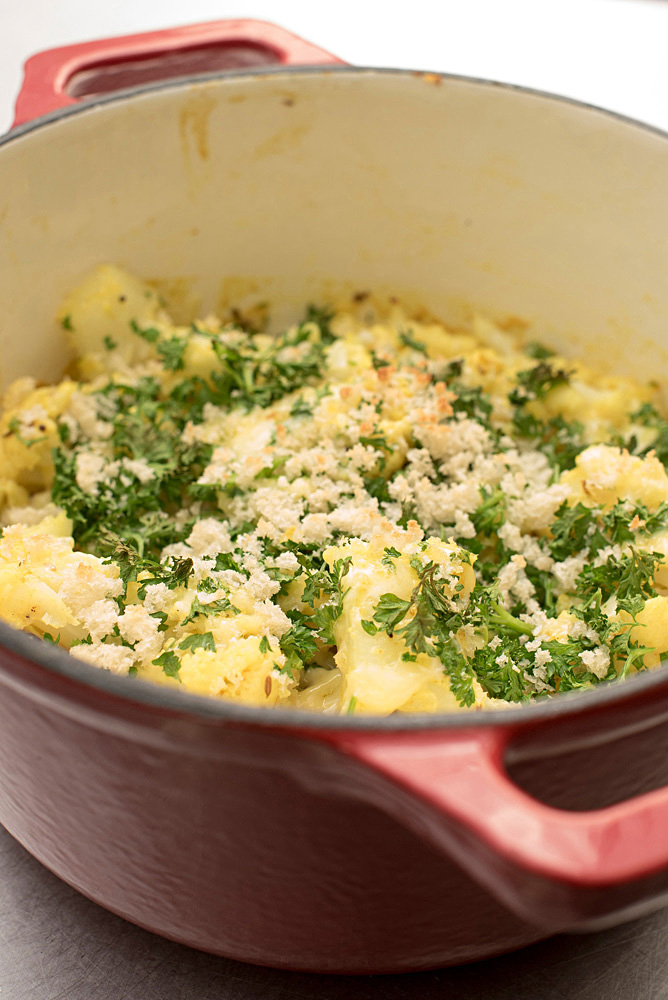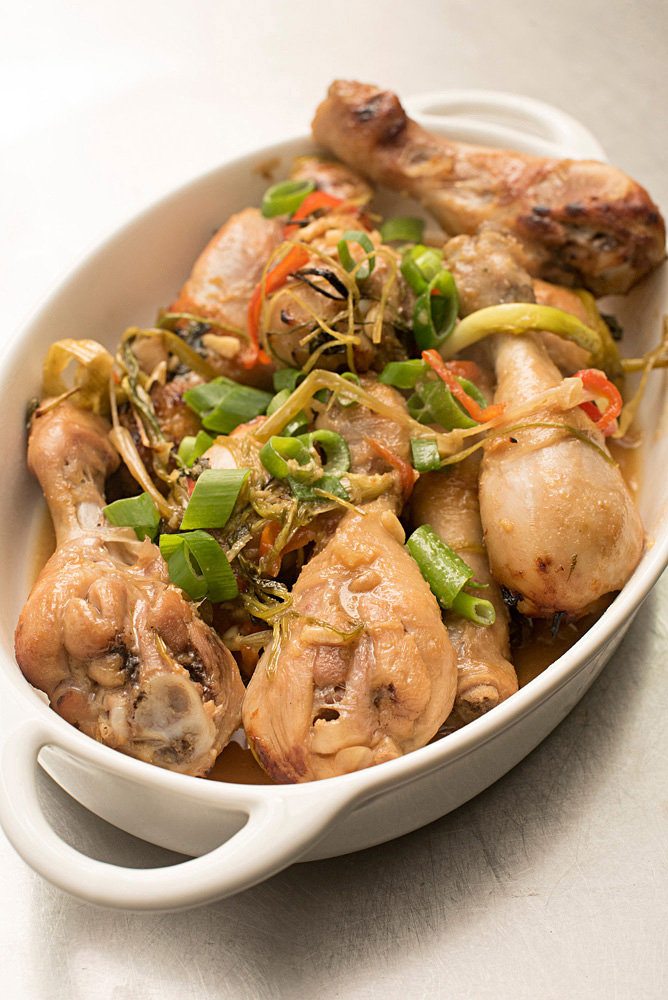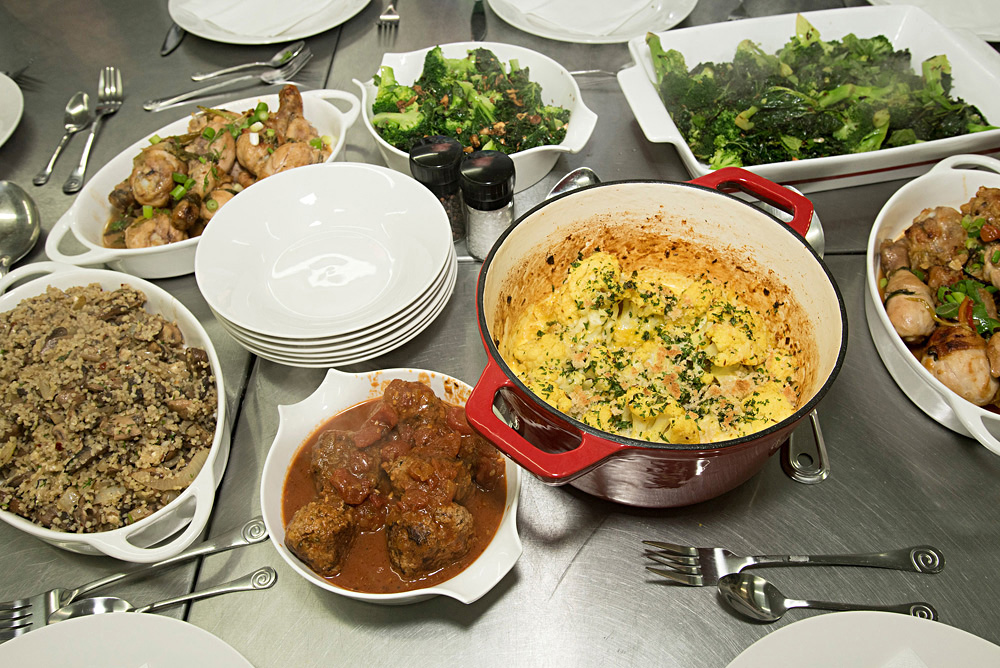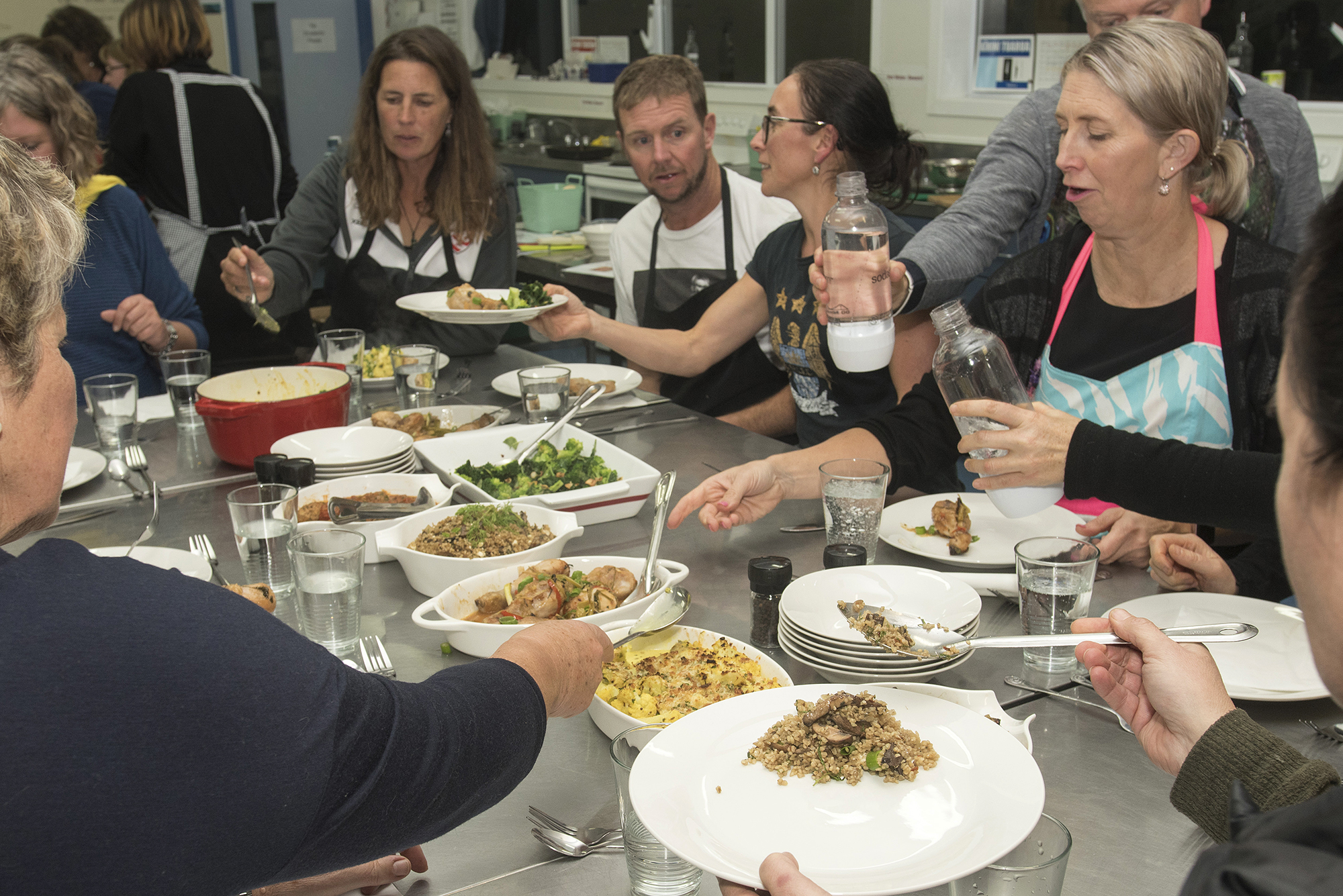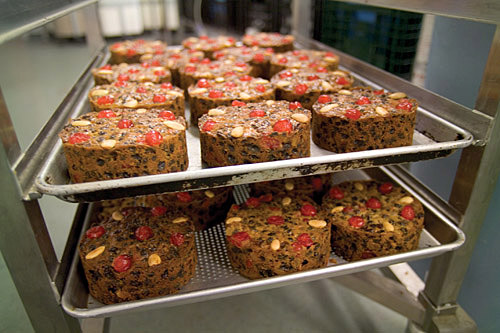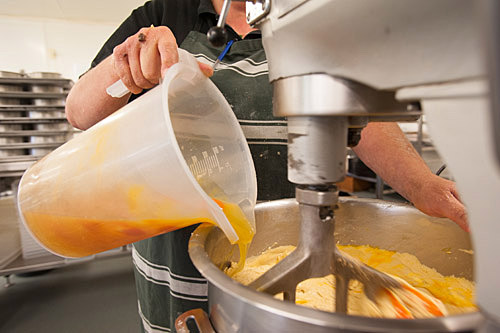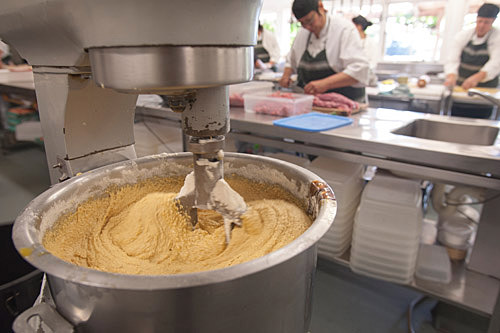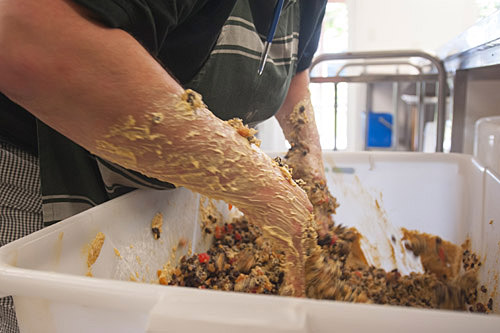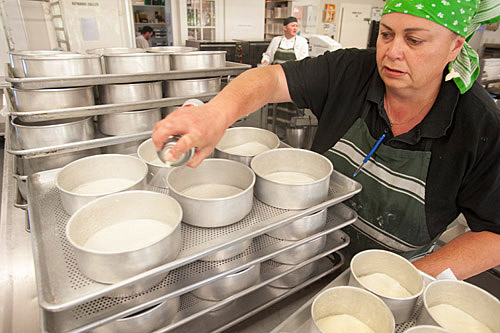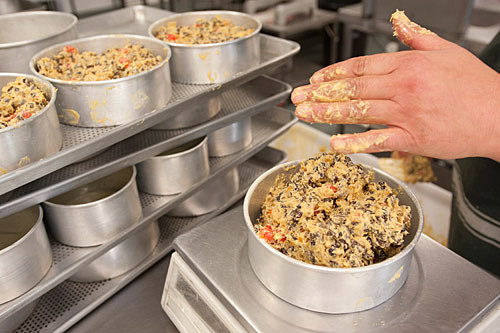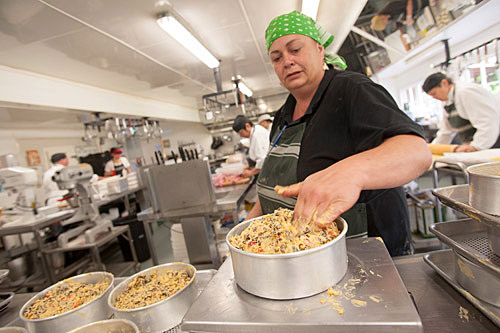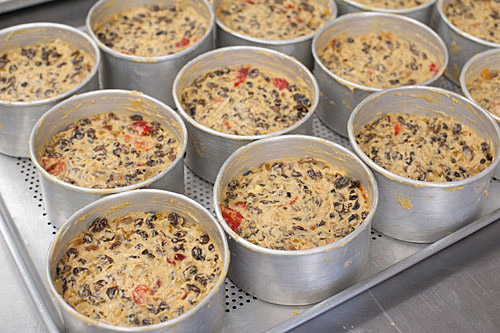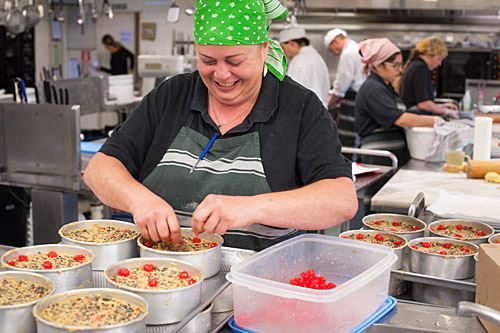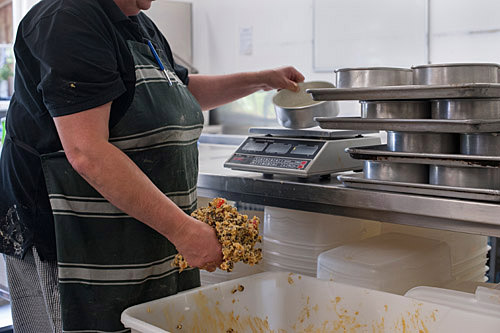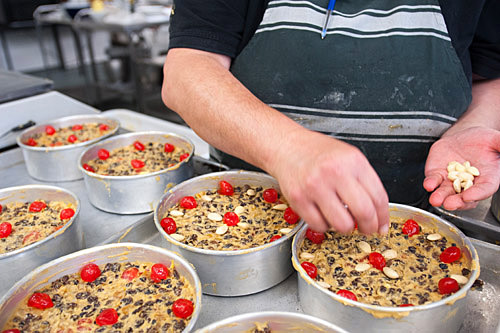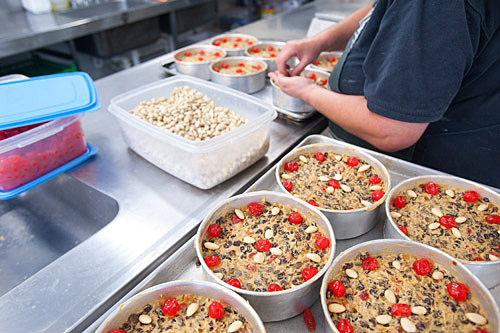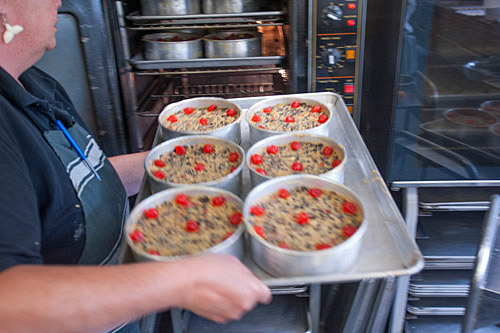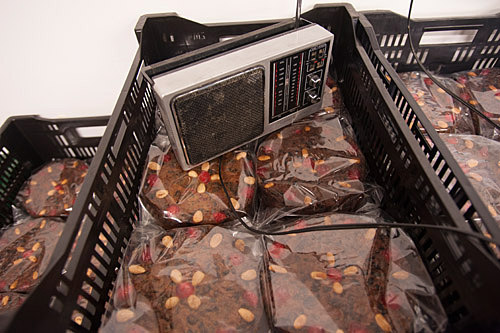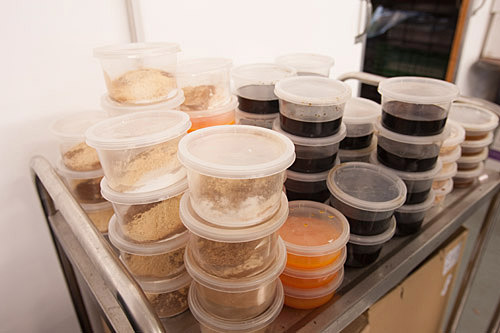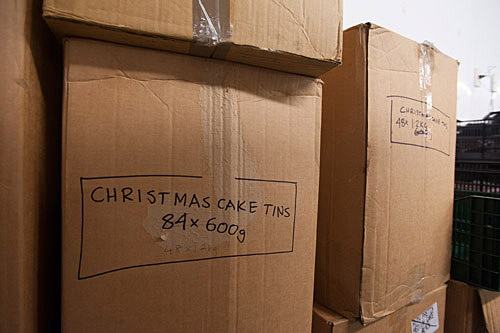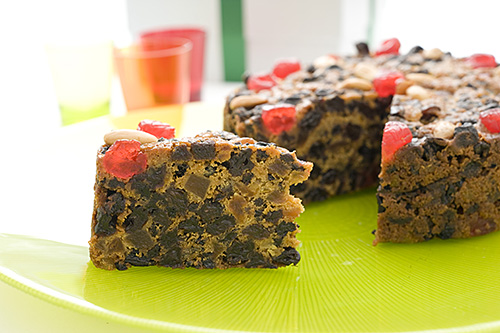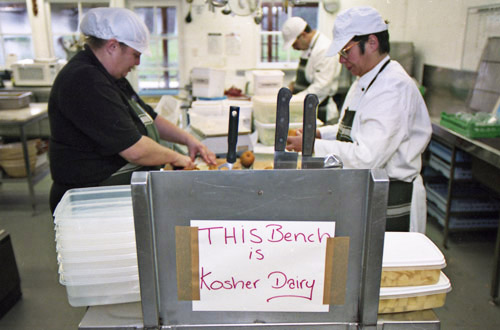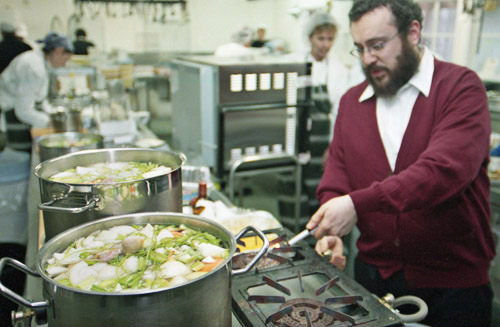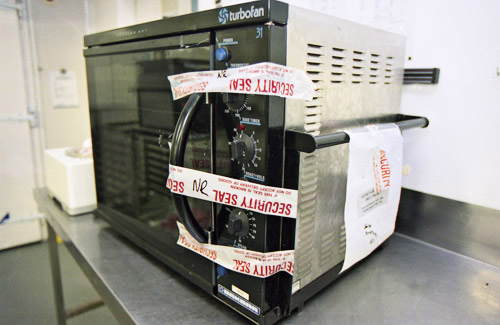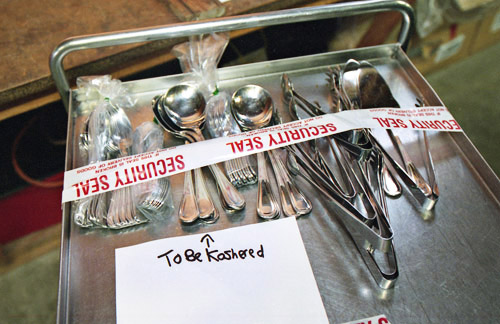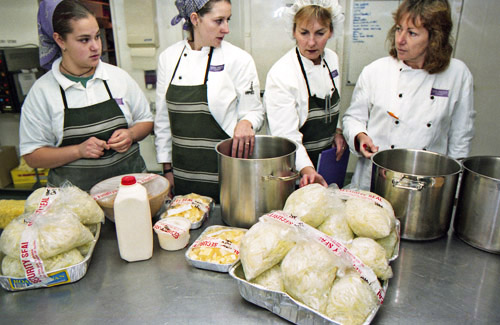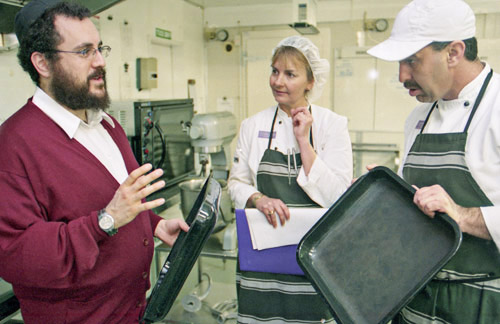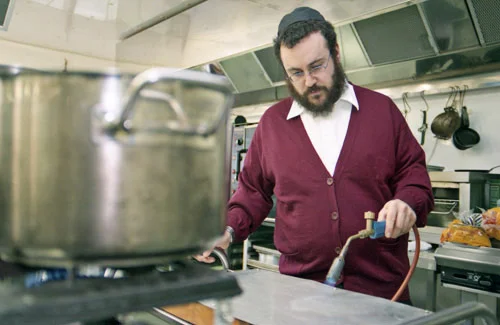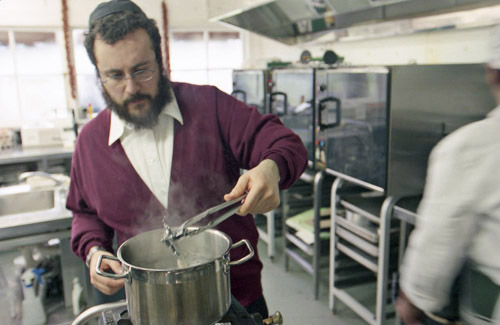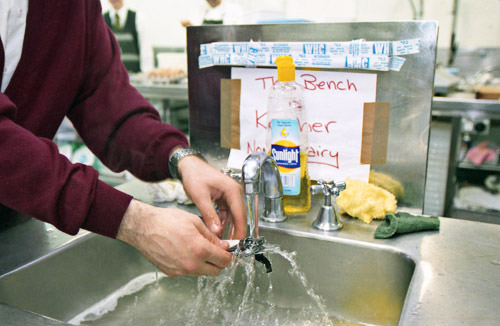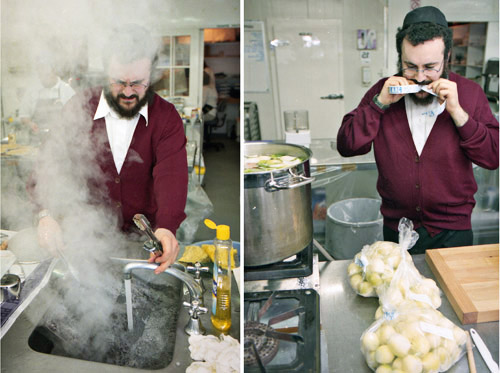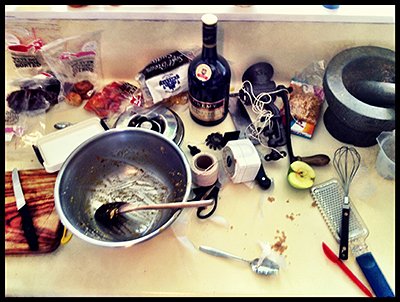The smells and taste of the Middle East came to Kapiti on Friday evening. 24 participants paid $50 per head to attend a chef-less cooking class at Kapiti College. Organised by Keryn Mells, the first Kapiti Kitchen Class, in teams of three, cooked recipes from the Ottolenghi book Simple. Although there were a few mishaps, the food was successfully turned out in less than two hours. Following laminated instructions, the participants cooked nine dishes that included chicken with ginger, miso and lime; mustardy cauliflower cheese; and fish cake tacos with mango, lime and cumin yogurt. Simple indeed.
Making Ruth Pretty's Xmas Cakes
Every year in August Ruth Pretty’s commercial kitchen gets into the mid-winter Christmas spirit. It’s the start of a festive ritual which ends with more than 4000 Christmas cakes despatched for celebrations far and wide by the special December day. The never-published Christmas cake recipe arrived hand-written after Ruth asked her staff for contributions for end of year client gifts. Thirty five other recipes were tried but fell short of the magical combination.
Long-time Ruth Pretty staff member, Carla Carkeek bakes 74 cakes a day several days a week from August until December. One year 17,000 Christmas cakes were made as staff gifts when two banks merged (Carla had extra help for this one). The cake won top prize in Christchurch’s 2007 Royal A&P Show commercial bakery section and at least one cake a day heads offshore, delivered mainly to expats in Asia and as far as soldiers in Afghanistan and elsewhere.
The fruit is first soaked in sherry and after the cakes are cooked they get doused in brandy, ensuring a long life.
One cake in 36 is cut and tested, with the slices then devoured by visitors to Ruth’s shop. Made by Carla’s steady hands, the testing seldom finds errors. Although one year the team did pick up a change in the potency of Hansell’s essences after the company changed hands.
Watching her handle 23 different ingredients to make 74 cakes and prepare mis-en-plas for the next day’s 74, it’s easy to see why Carla is referred to as the Christmas Cake Queen.
Koshering Ruth Pretty's Kitchen
To be accepted as kosher, certain foods which are completely cooked by a non-Jew (bishul akum) may not be eaten, even if the foods are kosher and are cooked with kosher utensils. Ruth Pretty calls on a local Rabbi to sanction the food for the times she has catered Jewish events in Wellington (this was for a Bar Mitzvah). Foods that generally come under the category of bishul akum are:
Foods that cannot be eaten raw, such as meat or grains. (This excludes foods that can be eaten either cooked or raw, such as apples or carrots.)
Foods that are considered important, "fit to set upon a king's table." There are various opinions regarding what are considered "royal foods."
The key is for the Rabbi to participate in the cooking in a meaningful way in order to render the food kosher. If a non-Jew cooked the food alone, without Jewish participation, the food and utensils are not regarded as kosher.
These photos were taken with 35mm film and I can't help thinking they have a natural and organic feel, resonating well with the Koshering.
Journey to a Christmas Pudding | Murray Lloyd Photography
Mother in law would be delighted if I made the pud. Raisins yes, sultanas yes, currents yes…dried pineapple must get, figs also, beef suet must get, so much for being vegetarian….brandy yes, sherry must get - great chilled pre-dinner drink. Need a 1.5 litre bowl … and a space offive 7 ½ uninterrupted hours. Need string. Mother in law provides bowl, suet from the butcher. All assembled. Have coffee and begin. Chop, chop chop. Suet rather smelly, minced, rubbed in. Mix into bowl. Paper lids on, teflon rubber bands replace string. Pud in pot. That took 2 ½ hrs only 5hrs to go….water gets in top of pud. redo paper still 5hrs to go...
finished pudding should look something like this, recipe in Ruth Pretty Cooks at Home or you can find it here..eat in 2012 or even better save for 2013. Another recipe from the book might also be good around Christmas.
Vegan Pavlova Recipe at WOAP | Murray Lloyd Photography
“The world’s first vegan pavlova!” claimed Professor Kent Kirshenbaum, while giving a presentation at Ruth Pretty’s unscheduled WOAP event. He thought he may have also produced New Zealand’s first vegan meringues, but was surprised to find Angel foods (an Auckland-based vegan supplier) had beat him to it. Kirshenbaum, a New Yorker, was in New Zealand to help celebrate the 2011 Year of Chemistry.
Luxuriating in the space the commercial kitchen provided, Kirshenbaum and his assistant Anne McBride took us on a world tour of mysterious ingredients. First was the Chilean Quillaja Saponaria- its soapy properties can be used to make extra head on low alcohol beer, fire fighting foam and of course the vegan meringues. The inner bark of this tree has also been linked to methane reduction in dairy cows and lowering of cholesterol in humans.
After being served an unusual warm syrupy drink by Ruth Pretty, the Professor introduced us to Salepli Dondurma the Anatolian stretchy ice cream. The stretch ingredient in the ice cream is called salep and is derived from rare Turkish orchids – so rare the Turkish authorities have banned the export of this plant extract. I found out my syrupy drink was made with salep – apparently sourced in Wellington!
Not deterred by the unavailability of salep Kirshenbaum and McBride zapped us up a topping for the meringues using versawhip, xanthan gum, sugar and raspberry sauce. Xanthan gum also has links with our dairy industry as it can be derived from whey, the by-product of cheese making. We got to eat the raspberry-topped meringues (recipe is below) – the dessert had good texture but the herbaceous taste of the meringue had me thinking I’ll stick to egg whites.
The Professor had clearly done his research on New Zealand, with his next topic being the barbecue. Obsessed with the smoky flavours of the BBQ, but unable to use one at his apartment (“I’d be arrested in New York if I started one”), Kirshenbaum was drawn to analyse liquid smoke. He deduced it is probably safer to use than untreated-wood smoke due to the carcinogens being removed. Could this be the end of this bastion of New Zealand culture?
The perfect steak? The exact time for a fillet of salmon? Precise times for cooking an egg? Try out sous vide cooking (precise temperature control). How about reductions without heat, centrifuges and rotovaps - it all sounds like science fiction but science in the kitchen is already nearby - think Martin Bosley, Ferren Adria, and Hesten Blumenthal. For more about molecular gastronomy check the Experimental kitchen collective headed up by the very engaging Professor Kent Kirshenbaum.
Recipe for vegan meringues
Mix 60ml water with 3ml quillaja saponaria
Add 5ml lemon juice and 15ml Campari
Beat to form soft peaks, then add 65g granulated sugar one spoonful at a time until stiff peaks form. Sift in 40g confectioners’ sugar and quickly beat to disperse.
Spoon meringue on to baking sheet lined with parchment paper
Bake at 225F for 1 hour, then turn oven off and let meringues cool for 1.5hrs.
